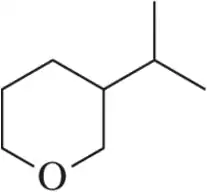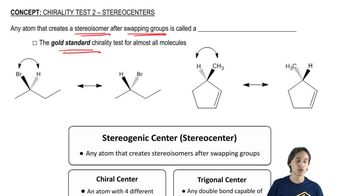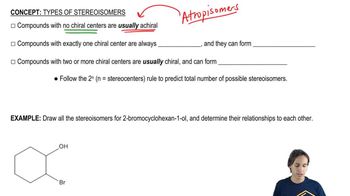Identify
1. constitutional isomers
2. stereoisomers
3. cis–trans isomers
4. chiral compounds

 Verified step by step guidance
Verified step by step guidance Verified video answer for a similar problem:
Verified video answer for a similar problem:



 1:41m
1:41mMaster Different atoms or different connectivity. with a bite sized video explanation from Johnny
Start learning